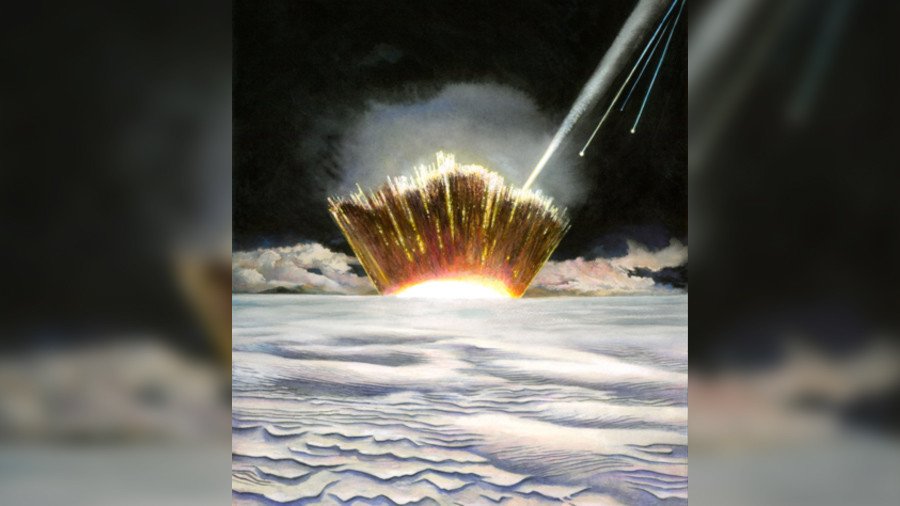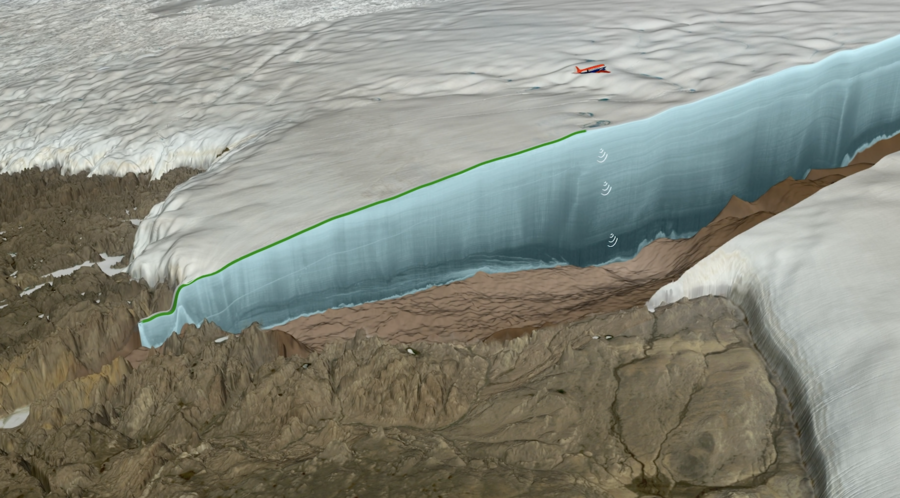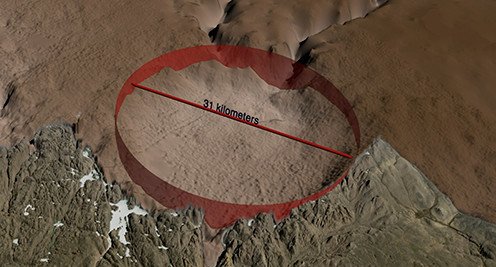Hiding in plain sight: Scientists discover massive, Paris-sized crater under Greenland ice (VIDEO)

Scientists have discovered a massive 31-kilometer (19.3 miles) diameter crater made by a 10 billion-tonne meteorite which smashed into Greenland up to three million years ago - and it’s been hiding in plain sight all along.
The giant, iron space rock blasted ancient Greenland at a speed of 12 miles per second, releasing 47 million times the energy of the Little Boy bomb that flattened Hiroshima in 1945. The strike melted vast amounts of ice, sending vast torrents of meltwater into the surrounding ocean and scattering debris far and wide.
The phenomenal impact struck at some point between 12,000 years ago and 3 million years ago.
Not only is this the first such crater discovered underneath current ice sheets, it’s also the 25th largest crater ever discovered on earth and the largest from its era (within the last 3 million years). The crater was originally spotted in July 2015 but it has taken an international team of scientists three years to verify the discovery.
“Extraordinary discoveries take extraordinary evidence,” geologist Kurt H. Kjær of the Natural History Museum of Denmark told ScienceAlert.

Using a decade’s worth of radar-sounding NASA data, the team, led by researchers from the Centre for GeoGenetics at the Natural History Museum of Denmark, University of Copenhagen, were able to narrow down the location of the incredible anomaly underneath the kilometer-thick glacier.

“We immediately knew this was something special but at the same time it became clear that it would be difficult to confirm the origin of the depression,”Kjær said. “You have to go back 40 million years to find a crater of the same size, so this is a rare, rare occurrence in earth’s history.”
READ MORE: Something’s broken inside Earth? Scientists explore why millennia-old process has stalled
Scientists will now attempt to locate nearby debris to better understand the composition of the meteorite, before delving under the frozen depths of the glacier to reach the space rock itself (because, as science fiction has taught us, nothing could possibly go wrong there).
“We live on a planet where you can survey anything and you think you know everything,” said Kjær. “But when you see such a big thing as this, hiding in plain sight, you realise that the age of discovery is not over yet.”
Think your friends would be interested? Share this story!













